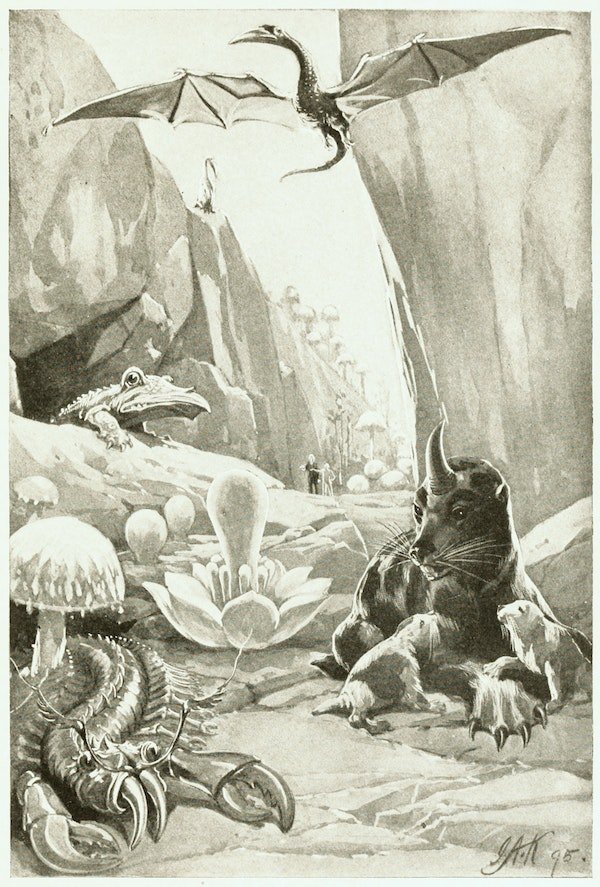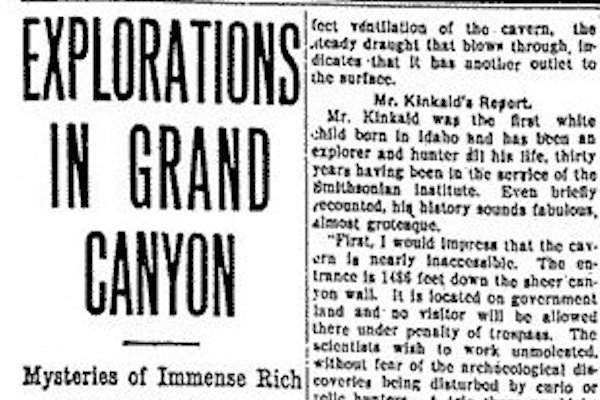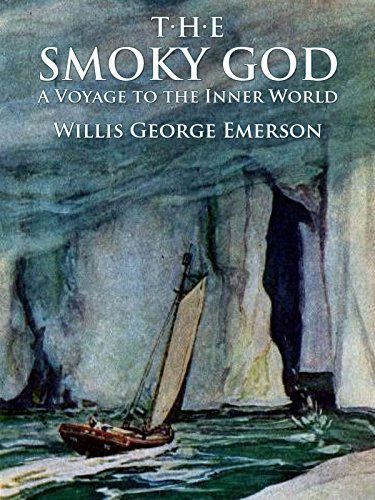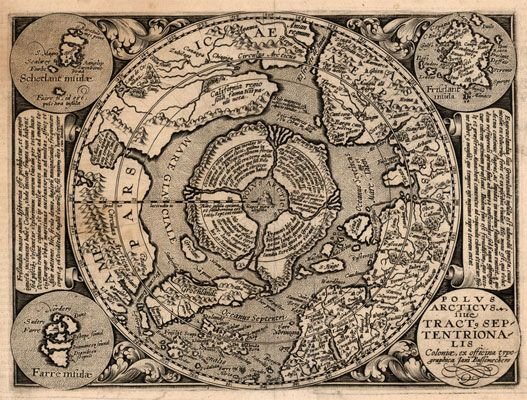Unexplored Subterranean Worlds: Uncovering the Mysteries Beneath the Surface
Disclaimer
The intention of this content is to expand awareness about certain places, myths and stories told at some point by humanity. Much of the information may not find scientific basis or contradict current theories. Knowledge, throughout history, is constantly updated, constructed or replaced as there is greater understanding. Therefore, we want to build a serious approach, within free thinking, and in its use in a beneficial way for collective evolution. If you enjoy this type of content consider following us on Instagram and Youtube for more.
Introduction
As humanity explores the outer reaches of space and the depths of the oceans, there is a mysterious world that remains largely unknown: the hidden subterranean worlds. In this article, we'll delve into these enigmatic domains and explore intriguing stories from adventurers who claim to have found evidence of these subterranean worlds, even if not scientifically proven.
What are the hidden underground worlds? They are complex systems of tunnels, caverns and passages that extend beneath the Earth's surface. These underground environments can vary in size and complexity, from small caves to extensive, connected underground networks.
The Caves of Lake Titicaca
One of the most intriguing stories involving subterranean worlds is the existence of mysterious underwater caves in Lake Titicaca, located in the Peruvian Andes. Legends about a lost underground city have piqued the interest of explorers and researchers over the years. These legends are mentioned in works such as "Lost Realms" (1986), by Zecharia Sitchin, and "Mysteries of Ancient South America" (1974), by Harold T. Wilkins.
Among the scholars dedicated to investigating these myths is Arthur Posnanski, a Bolivian engineer and archaeologist. In his book "Tiahuanaco: The Cradle of American Man" (1945), Posnanski presents his research on the culture of Tiahuanaco, who supposedly built this underground city. He describes evidence of a complex system of tunnels and underground chambers found in the lake area, suggesting a connection to the mythical lost city.
Although there is no scientific proof of the findings, reports from divers and researchers mention the discovery of submerged architectural structures, such as stone walls and terraces, at the bottom of Lake Titicaca. In addition, mysterious artifacts such as ceramics and statues were also found. A rather curious story is that of the book The Chinkana of the Titicaca written by G. Antonio Portugal Alvizuri. Despite being a story that is confused with fiction, it can be seen as an interesting source of comparative stories with other discoveries.
We recently cited in our content on the Mysteries of Lake Titicaca highly confidential archaeological research conducted internationally below the locality of Tiahuanaco. Few know what it really is, or was discovered there.
The "Etidorhpa" book
One of the sources of inspiration for explorers and researchers interested in the mysteries of the subterranean worlds is the work "Etidorhpa: The End of the Earth". Published in 1895, the book was written by John Uri Lloyd, a renowned pharmacist and writer of the time. Though viewed as a work of fiction by many, "Etidorhpa" depicts the extraordinary journey of a man called I-Am-The-Man, who claims to have traveled to the inner Earth.
In this captivating narrative, I-Am-The-Man chronicles encounters with strange beings, spectacular subterranean landscapes, and an advanced civilization that inhabits the caverns of the “Hollow Earth.” According to his account, the speaker is kidnapped by other members of a secret society, because he is suspected of being a threat to their secrecy. This story is a facsimile of the kidnapping of an individual named William Morgan in 1826 by alleged secret societies. I-Am-The-Man is taken by these people to a cave in Kentucky and led on a long journey underground. This journey is quite curious as it becomes similar to an inner journey as much as a geographic journey through subterranean realms.
Would this story be the result of a hallucinogenic journey by the author himself? Many readers find the account an intriguing source for exploring the concept of hidden subterranean worlds. The detailed and meticulous descriptions with the details and elements of adventure and discovery in the narrative have influenced the imagination of adventurers and researchers, fueling their desire to explore the unknown and unlock the secrets of the subterranean worlds.
The Underground World at the Grand Canyon
The Grand Canyon, one of the most impressive natural wonders in the world, is also surrounded by legends and stories about the existence of an unknown subterranean world. Over the years, explorers and adventurers have reported discovering secret entrances and hidden tunnels deep within the canyon, suggesting the presence of a vast subterranean system.
While claims about the subterranean world in the Grand Canyon are widely considered speculative, these stories continue to attract the attention of mystery enthusiasts and intrepid explorers alike. Some explorers claim to have found evidence of underground architectural structures and even a lost city deep in the canyon.
Reports mention encounters with strange creatures, such as winged beings and humanoids, as well as descriptions of tunnels that extend over long distances. One of the most referenced stories has to do with the supposed concealment of the discoveries by the Smithsonian Institute.
On April 5, 1909, the Arizona Gazette ran the following headline:
“Grand Canyon Explorations; Mysteries of the immense and rich cave being brought to light; Jordan is excited; Remarkable Find Indicates Ancient People Migrated from the East.”
The article includes a detailed testimony by G. E. Kincaid who says that, traveling alone along the Green and Colorado rivers, he discovered evidence of an ancient civilization - possibly of Egyptian origin. The story also states that a Smithsonian archaeologist named S. A. Jordan returned with Kincaid to investigate the site. However, the Arizona Gazette appears to have been the only newspaper to run the story. No records can confirm the existence of Kincaid or Jordan.
The hypothetical reports contain large halls with ancient treasures, statues and references to eastern cultures.
Despite speculation and a lack of hard evidence, the aura of mystery surrounding the Grand Canyon and a hidden subterranean world continues to fuel the imagination and curiosity of those who venture into the depths of this spectacular canyon. After all, many things from ancient civilizations and cultures may still be lost or buried under millennia of sand, stones and dust.
cappadocia below ground
The region of Cappadocia, located in Turkey, is known not only for its unique landscape, with rock formations carved by time, but also for being home to a complex system of ancient underground cities. These underground cities, dating back thousands of years, were carved out of volcanic rock and served as refuges during periods of conflict and invasion.
While many parts of these underground cities have been explored and opened up to tourists, there are still areas that remain unexplored and inaccessible. Visitors who venture deep into these subterranean cities can marvel at the ingenuity and complexity of the structures, including labyrinthine tunnels, rooms, food storage, and even ingenious ventilation systems.
Among the best known underground cities in Cappadocia are Derinkuyu, Kaymaklı and Özkonak. These cities offer a fascinating glimpse into how ancient communities found safety and security beneath the surface, as well as preserving evidence of their architectural ingenuity and building skills. Local archaeologists believe that many of these caves date back to pre-modern times and that they were inherited and added to as soon as they were discovered.
Why they were built by ancient man is still unknown.
While scientific exploration and research has been carried out in these underground cities, much remains to be discovered. The unexplored areas represent a mystery that attracts the attention of archaeologists, historians and mystery enthusiasts, eager to unlock the secrets hidden beneath the surface of Cappadocia.
"The Smoky God"
Among the works that explore the theme of subterranean worlds, "The Smoky God: A Voyage to the Inner World" stands out. Published in 1908, this book was written by Willis George Emerson and presents an account of a journey to the underworld.
In the narrative, the author shares the story of a Norwegian sailor named Olaf Jansen, who claims to have traveled to the interior of the Earth through a polar opening after days of navigation after a storm that drove them away from the continent. According to Jansen, he and his father would have discovered an underground world called "Eden" or "Symmes' Inner Earth" inhabited by an advanced and enlightened civilization.
Although "The Smoky God" is considered a work of fiction, the work gained some popularity and influenced many enthusiasts of underground world explorers. Jansen's story captured readers' imaginations, raising questions about possible entrances to the underworld and the existence of civilizations hidden deep within the Earth.
Malta and its chambers and caves
The island of Malta, located in the Mediterranean Sea, is known not only for its rich history and megalithic temples, but also for its intriguing underground chambers and caves. These underground structures have piqued the interest of archaeologists and explorers alike due to their enigmatic nature and the mysteries surrounding their purpose and meaning.
Among the most notable underground chambers and caves in Malta are Ħal Saflieni and the Għar Dalam Caves. The Ħal Saflieni Cave, also known as the Ħal Saflieni Hypogeum, is one of the most fascinating attractions in Malta. This underground cave, located in Paola, is an extraordinary archaeological site dating back to around 4000 BC. The Hypogeum is made up of an intricate network of rooms, corridors and chambers carved into the limestone rock.
In addition to its historical and archaeological importance, the cave of Ħal Saflieni is also surrounded by stories and legends that suggest a mysterious side. There is a report, from National Geographic in 1940, of people disappearing inside the Hypogeum, adding to its aura of mystery and attracting the attention of mystery and paranormal enthusiasts.
Heritage Malta senior curator of prehistoric sites, Katya Stroud, believes that this myth – similar to those linked to the catacombs of St Paul – was created to keep children and adventurous people away from such places where they could easily get hurt.
One more mystery of the place are the elongated skulls found inside the caves, but this topic is already extensively covered by us in another content HERE.
On the other hand, the Għar Dalam Caves, located near Birżebbuġa, are known for their evidence of prehistoric occupation. These caves preserve archaeological remains, such as bones of extinct animals and stone tools, revealing valuable information about human and animal life during remote periods of Malta's history.
While these chambers and caves have been the subject of exploration and study, much remains to be learned about their exact purpose and their full historical context. What we want to emphasize here is that we must not embark on the absurd stories, but at the same time, always remain open and inquisitive to question the mysteries in light of the myths and oral knowledge that connect these fascinating underground spaces.
Conclusion
We have only scratched the surface of many myths and legends about hidden subterranean worlds. There are several other books, references, cultures and places that, likewise, cite incredible stories about caves, places and treasures to be unveiled. Although there are intriguing reports from explorers and adventurers who claim to have found evidence of these places, the truth about their existence is still shrouded in uncertainty.
Perhaps one day we will be able to unravel the mysteries of these subterranean worlds and reveal what really lurks beneath our feet. Exploration and proper scientific research are always needed to verify the veracity of these claims, but we must always remain curious and ask: why did the ancients tell these “legends”? After all, the truth is out there!
References
Sitchin, Z. (1986). Lost Realms: Book IV of the Earth Chronicles. Avon Books.
Wilkins, H. T. (1974). Mysteries of Ancient South America. Citadel Press.
Lloyd, J. U. (1895). Etidorhpa: The End of the Earth. Published by the Author.
Emerson, W. G. (1908). The Smoky God: A Voyage to the Inner World. Adventure and Research Company.
Heritage Malta. (n.d.). Għar Dalam Cave and Museum.
UNESCO. (n.d.). Göreme National Park and the Rock Sites of Cappadocia. World Heritage List.








